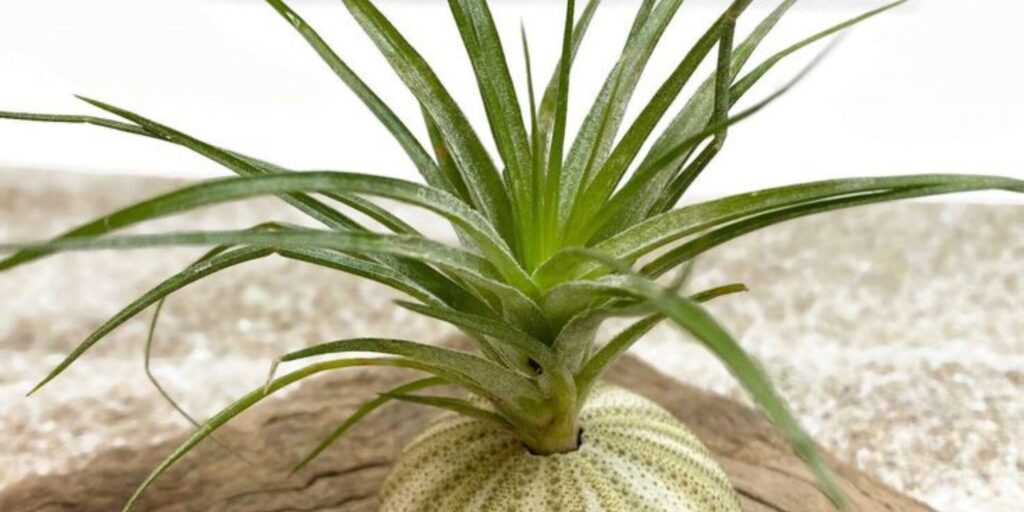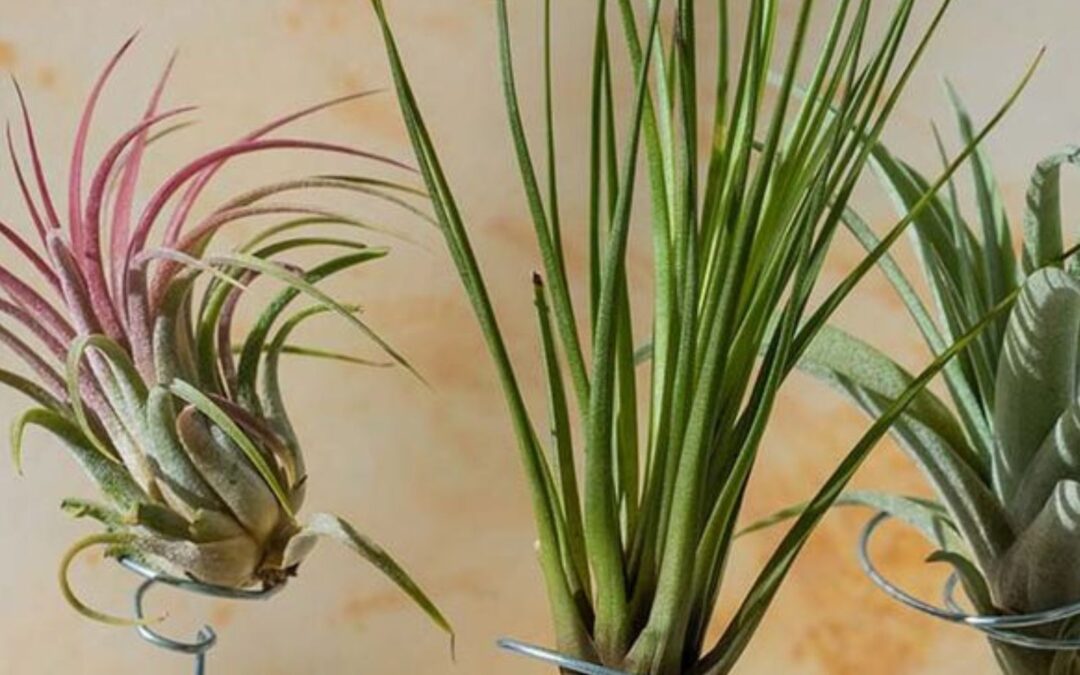Introduction
Air plant, known scientifically as Tillandsia, are among the most unique and captivating plants you can find. Unlike traditional plants that require soil to grow, air plants thrive in the absence of soil, deriving their nutrients and moisture directly from the air around them. Their extraordinary way of thriving, coupled with their striking appearance, makes them a favorite for plant enthusiasts and interior decorators alike.
In this article, we’ll explore everything you need to know about air plants, from their origins and natural habitats to their care requirements and decorative uses. Whether you’re a seasoned plant collector or a curious beginner, you’ll discover just how versatile and rewarding these plants can be.
What Are Air Plant?
Air plants belong to the Bromeliaceae family, which also includes the popular pineapple plants. Within this family, air plants fall under the Tillandsia genus, which encompasses over 600 species. Native to the forests, mountains, and deserts of Central and South America, air plants have evolved to survive in a variety of environments, from tropical rainforests to arid regions.
What sets air plants apart from most other plants is their epiphytic nature. Epiphytes grow on other surfaces—such as tree branches, rocks, or even cacti—without relying on soil for sustenance. Instead, air plants have specialized structures called trichomes on their leaves, which allow them to absorb water and nutrients from the air and surrounding environment.
Different Types of Air Plant

With over 600 species and countless hybrids, air plants come in a wide variety of shapes, sizes, and colors. Here are some of the most popular types you might encounter:
- Tillandsia Ionantha
One of the most popular air plants, Tillandsia ionantha is small and compact, with leaves that turn bright red or pink when blooming. It is often referred to as the “blushing bride” of air plants, thanks to its vibrant coloration.
- Tillandsia Xerographica
Known as the “king of air plants,” Tillandsia xerographica is larger than most species, with thick, silvery-green leaves that curl gracefully. Its striking appearance makes it a favorite centerpiece in decorative arrangements.
- Tillandsia Bulbosa
This species is easily identified by its tubular, curly green leaves that resemble tentacles. Tillandsia bulbosa thrives in humid environments and is often used in terrariums.
- Tillandsia Caput-Medusae
Named after the mythological Medusa for its snake-like leaves, this species has a quirky, whimsical shape that adds a playful touch to any display.
- Tillandsia Usneoides (Spanish Moss)
This unique air plants grows in long, flowing strands and is often draped over trees in its native habitat. It’s commonly used as decorative filler in floral arrangements.
- Tillandsia Andreana
This rare species has delicate, needle-like leaves that form a rounded shape. It is a favorite among collectors due to its unique beauty.
How Air Plant Survive Without Soil
Air plants have a remarkable and efficient way of sustaining themselves without soil. Their trichomes, which are tiny, hair-like structures on their leaves, play a crucial role in their survival. Trichomes capture water, dust, and nutrients from the air, allowing the plant to thrive even in challenging environments.
Additionally, air plants have a specialized root system, but it’s primarily used for anchoring the plant to surfaces like trees or rocks rather than for absorbing nutrients. This ability to live independently of soil makes air plants highly adaptable and easy to care for.
Benefits of Growing Air Plants
Growing air plants offers many advantages, making them an excellent choice for any home or workspace. Here are some reasons why air plants are so appealing:
- Low Maintenance
Air plants require minimal care compared to traditional houseplants. With no need for soil, there’s less mess, and their watering requirements are straightforward, as we’ll discuss later.
- Space Savers
Air plants are compact and lightweight, making them perfect for small spaces. You can place them on shelves, hang them in creative displays, or even attach them to the walls for a vertical garden.
- Aesthetic Appeal
Air plants come in various shapes, textures, and colors, providing endless decorative possibilities. Their unique appearance can add a touch of nature and elegance to any interior.
- Air Purification
Like other plants, air plants contribute to improving indoor air quality by absorbing carbon dioxide and releasing oxygen. Some studies suggest they may even help remove airborne toxins.
- Perfect for Any Environment
Air plants are incredibly versatile and can thrive in a variety of indoor and outdoor settings. Whether you want to decorate your living room or patio, these plants can adapt with ease.
Caring for Air Plants

While air plants are low-maintenance, they still need proper care to thrive. Here’s a comprehensive guide to keeping your air plants healthy and vibrant.
- Light Requirements
Air plants thrive in bright, indirect sunlight. Place them near a window with filtered light or under artificial grow lights for best results. Avoid prolonged exposure to direct sunlight, as it can scorch their delicate leaves.
- Watering
Watering air plants is essential, but it’s also where most people struggle initially. Here’s how to do it properly:
- Method: Submerge your air plant in a bowl of water for 20-30 minutes once a week. After soaking, gently shake off excess water and place the plant upside down on a towel to dry completely. This prevents water from pooling in the leaves, which can lead to rot.
- Humidity: If you live in a particularly dry climate, mist your air plant with water 2-3 times a week to ensure it stays hydrated.
- Quality: Use filtered, distilled, or rainwater, as tap water can contain chemicals that may harm the plants.
- Temperature and Humidity
Air plants prefer temperatures between 50°F and 90°F (10°C to 32°C). They thrive in humid environments, so consider placing them in bathrooms or kitchens where moisture levels are higher.
- Feeding
Fertilize your air plants once a month using a water-soluble fertilizer specifically formulated for bromeliads or air plants. Add the fertilizer to their soaking water to promote growth and blooming.
- Air Circulation
Air plants need good airflow to stay healthy. Ensure they are placed in well-ventilated areas and not confined to closed containers for extended periods.
- Pruning and Maintenance
Remove any dead or browning leaves by gently pulling them away from the plants. This helps maintain their appearance and encourages healthy growth.
Creative Ways to Display Air Plants
One of the best things about air plants is their versatility when it comes to display. Here are some creative ideas to showcase your air plants:
- Glass Terrariums: Arrange your air plants in glass terrariums filled with moss, stones, or decorative sand for a modern, minimalist look.
- Wall Mounts: Attach air plants to wooden plaques, driftwood, or metal grids to create a vertical garden on your wall.
- Hanging Planters: Use macramé hangers, geometric frames, or clear ornaments to display your air plants in mid-air.
- Seashells and Rocks: Place small air plants in seashells, rocks, or ceramic sculptures for a natural, whimsical touch.
- Table Centerpieces: Combine air plants with candles, flowers, and other decorative elements to create eye-catching centerpieces for your table.
Common Challenges with Air Plant
While air plants are generally easy to care for, they are not entirely immune to challenges. Here’s how to address some common issues:
- Brown Tips: If your air plants leaves are turning brown at the tips, it may be a sign of dehydration. Increase your watering frequency or mist the plant more often.
- Rot: Rot occurs when water collects in the base of the plant and causes decay. Always allow your air plant to dry completely after soaking.
- Lack of Growth: If your air plants isn’t growing or blooming, ensure it’s receiving enough light, nutrients, and proper care.
The Role of Air Plant in Eco-Friendly Living

Air plants are a great addition to an eco-conscious lifestyle. Their minimal care requirements mean you use less water and resources compared to traditional gardening. Additionally, many air plants are sustainably sourced, ensuring that their cultivation does not harm their natural habitats.
By incorporating air plants into your home or office, you’re not only adding a touch of nature but also supporting sustainable practices and reducing your environmental footprint.
Bringing Air Plant into Your Life
Air plants are much more than just decoration—they’re a conversation starter, a testament to nature’s adaptability, and a gateway to exploring the fascinating world of botany. Whether you’re drawn to their unique appearance, intrigued by their low-maintenance care, or inspired by their eco-friendly benefits, air plants have something to offer everyone.
Join the growing community of air plant enthusiasts and discover the joy of growing these incredible plants. With proper care and a touch of creativity, your air plants will thrive and bring a little slice of nature into your life.

